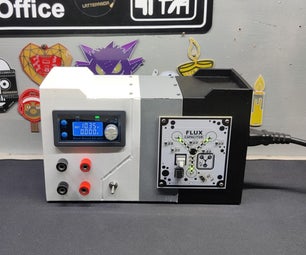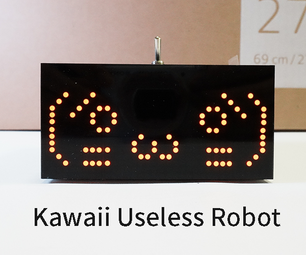Introduction: Soft IPhone and IPad Stylus
A few of us at Teague Labs have been experimenting with conductive foams and fabrics in search of an iPhone/iPad stylus that's somewhere between the intriguing hard foil sticks and wet q-tips on Instructables.
Fortunately, it's quite easy to make a soft, conductive writing tool using some pretty basic materials. All you need is a pencil, an anti-static sock, and some patience to cut and sew it all together.
Fortunately, it's quite easy to make a soft, conductive writing tool using some pretty basic materials. All you need is a pencil, an anti-static sock, and some patience to cut and sew it all together.
Step 1: Gather the Materials
For this project you'll need:
1. A pencil or pen (the non-pointy side is the side you'll be drawing with on your touchscreen).
2. An anti-static sock (such as this one, with X-Static in the foot area which contains conductive silver thread).
3. Scissors to cut the sock.
4. Needle and thread to stitch it together.
1. A pencil or pen (the non-pointy side is the side you'll be drawing with on your touchscreen).
2. An anti-static sock (such as this one, with X-Static in the foot area which contains conductive silver thread).
3. Scissors to cut the sock.
4. Needle and thread to stitch it together.
Step 2: Cutting the Sock
Cut the sock into a rectangle slightly larger than what is needed to wrap around the pencil. Leave room for stitching, but the more excess material you have, the larger the overall size of your stylus will be.
Step 3: Stitch It Up
Start by sewing a small flap over one end (see first picture). This will serve as a pocket for inserting and removing the pencil later. You can use a sewing machine, but it only took about 5 minutes by hand, so I recommend getting out your mini sewing kit and giving it a try.
Next, (see second picture) cut the rectangular section of anti-static sock material to be slightly shorter than the pencil's length. Then stretch the sock to so that it cover the pencil's entire length and hook it on the pencil's tip (this makes sewing it easier since the material is stretchy).
Finally (see third picture) sew up the rest of the sock alongside the pencil, leaving a gap between the two sewn sections so you can easily take the pencil out.
Next, (see second picture) cut the rectangular section of anti-static sock material to be slightly shorter than the pencil's length. Then stretch the sock to so that it cover the pencil's entire length and hook it on the pencil's tip (this makes sewing it easier since the material is stretchy).
Finally (see third picture) sew up the rest of the sock alongside the pencil, leaving a gap between the two sewn sections so you can easily take the pencil out.
Step 4: Invert the Stylus Sock
Once you're done sewing up the anti-static sock around the pencil, carefully remove the pencil and use it to invert the sock. Go slowly since it's easy to break a stitch if you sewed close to the edge of the material.
We found that pushing the sock with the pencil to invert it was much easier than trying to pull the material inside out. If it's difficult, just be patient and try pushing and pulling on other parts of the fabric.
We found that pushing the sock with the pencil to invert it was much easier than trying to pull the material inside out. If it's difficult, just be patient and try pushing and pulling on other parts of the fabric.
Step 5: Use It on Your IPhone or IPad!
Now place the pencil back into the stylus sock (with the eraser-end pointed toward the writing end -- the pointy side is too small to be reliable since the iphone/ipad expects the touch point to be about the size of a fingertip).
That's all there is to it; give it a try and see what you think.
We found that it works best for applications that lend them selves nicely to writing and drawing tools (such as sketching and note taking). Enjoy!
That's all there is to it; give it a try and see what you think.
We found that it works best for applications that lend them selves nicely to writing and drawing tools (such as sketching and note taking). Enjoy!











